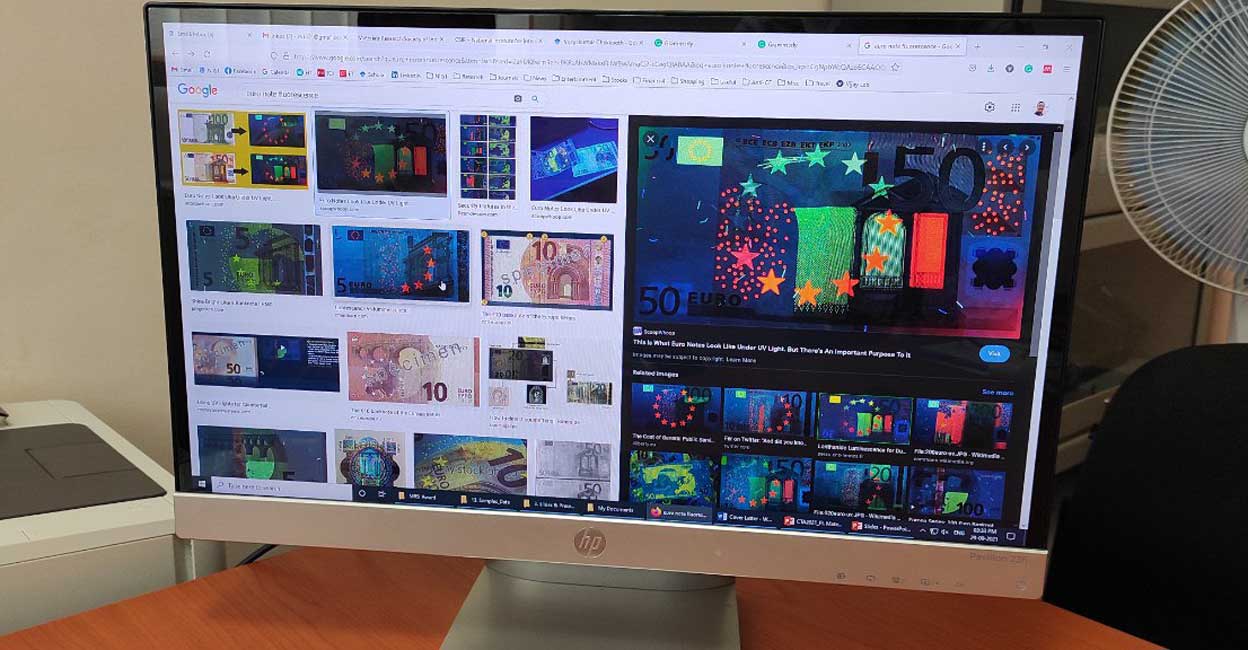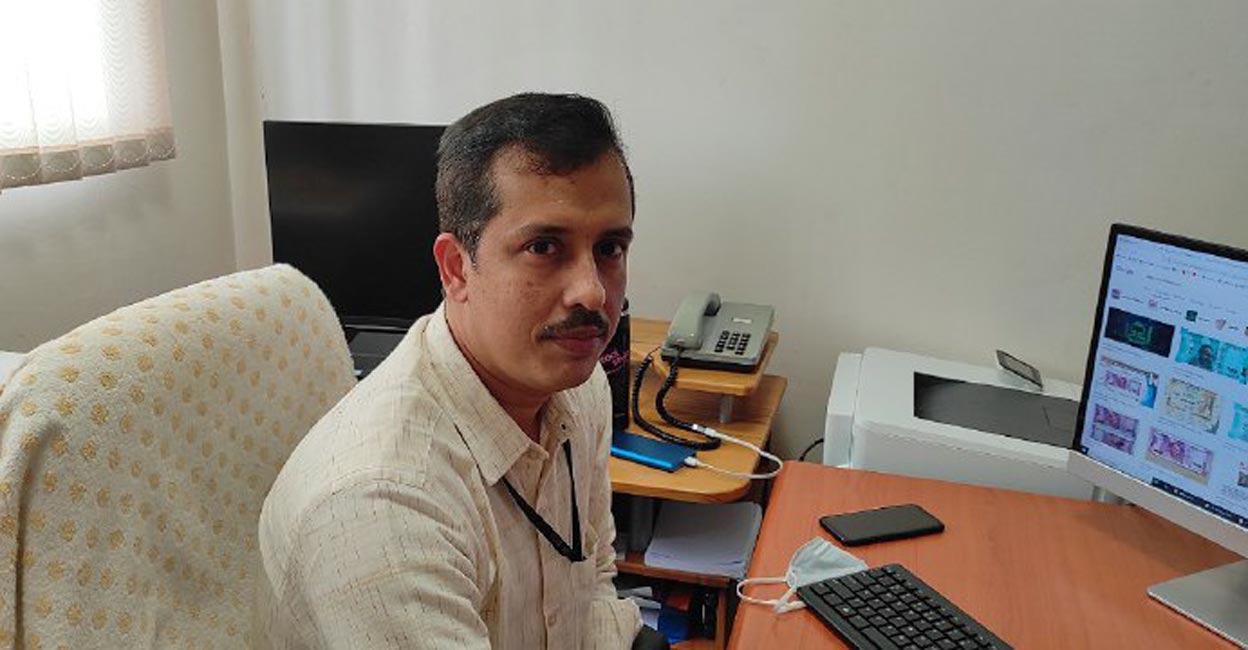Kerala-based scientists trump note forgers, give rupee a 'Made in India' glow

Mail This Article
It is known that expert counterfeiters can easily copy most of the security features embedded inside an Indian currency note; be it microletters, identification marks, security threads and also latent images that are seen only when the note is looked at from a particular angle.
These counterfeiters even use the very same pigments that give Indian currency notes their unique fluorescence. So when fake notes are placed under a UV lamp in a bank they go undetected because they emit the same fluorescent colours as the original.
It now looks like the secret fluorescence can be safely hidden from note forgers.
Danger of economic terrorism
Researchers at the Council of Scientific and Industrial Research-National Institute for Interdisciplinary Science and Technology (CSIR-NIIST), based in Thiruvananthapuram, have indigenously developed fluorescent material for security printing. This is for the first time that fluorescent pigments have been made in India.
“We are now buying these pigments from countries like Switzerland and France, at very inflated prices,” said Vijayakumar C, the principal scientist who led the project titled 'Fluorescent Materials for Security Printing'. “There are security risks involved in importing pigments from outside. The country from which we import pigments can sell the same pigments to another agency or country. It is a national security issue, which can even lead to economic terrorism,” he said.
Even Vijayakumar was unaware that India was importing high-security fluorescent pigments till he attended a national seminar on 'Indigenisation of Currency' in 2015. “We realised that even the top anti-counterfeiting solutions providers in the country were importing the stuff. We, therefore, took up the challenge and began work on manufacturing fluorescent matter for security printing by 2016,” he said.

The breakthrough has won Vijayakumar and his team of six the Certificate of Merit under the category of CSIR Technology Awards at the 80th Foundation Day celebrations of the Council of Scientific and Industrial Research (CSIR) held in New Delhi on September 26.
Hunt for the chameleon molecule
What the NIIST team has done is develop fluorescent material that would look white or off-white to the naked eye. But when exposed to UV light, they would emit a range of colours in the spectrum; blue, green, yellow, orange and red.
If India had not managed to develop such deceptive light-emitting material before, it was because the right kind of fluorescent molecules required for the creation of fluorescent pigments were hard to find. “99.5% of fluorescent molecules known in chemical literature are either coloured or have low-intensity fluorescence,” Vijayakumar said.
In other words, virtually all the molecules Indian scientists know are either non-deceptive or insipid, their colour was either visible to the naked eye or too weak to be seen even under UV lights (with wavelengths below 400 nanometres).

Stability challenge
The NIIST triumphed in finding the right kind of organic molecules. “Here, our experience counted. We have been doing research on fluorescent pigments for the last 20 years,” Vijayakumar said. But finding the right organic molecules is just a small step along the way. “These molecules (synthetic dyes) are not stable. We have to impart stability to these molecules by adding five to six components during pigmentation,” Vijayakumar said.
Stability is crucial for materials that need to last long like currency notes, passports and stamp paper. Constant exposure to sun, water, soap, acid, alkali and human fiddling should not render them useless. These pigments are not just made stable but are also given a spherical near-uniform particle size for hassle-free printing.
Stealing a march over tricksters
Vijayakumar said that if India holds the secret of its currency fluorescence, the country can be a step ahead of the tricksters and make subtle variations from time to time. “We can change the colour and intensity of the glow in our notes, or we can create a new hue whose content ratio only we will know,” he said.
Forgers are quick learners. Take the new Rs 500 series, for instance. The latest RBI report says that there was an increase of 31.3 per cent in counterfeit notes of this series when compared to last fiscal (2019-20). If 30,054 fake pieces of the new Rs 500 were detected in the banking system in 2019-20, the number of fakes jumped to 39,453 in 2020-21.
The NIIST has already transferred a part of its know-how, some of the newly developed fluorescent molecules, to a leading anti-counterfeiting solutions provider in the country for commercialisation. “In about six months the pigments will be manufactured on an industrial scale,” Vijayakumar said.
The other members of the project team are: Jubi John, senior scientist; Sreejith Shankar, senior scientist; Saju Pillai, principal scientist; Praveen V K, senior scientist, and Karunakaran V, principal scientist. All except Saju Pillai from the Chemical Sciences and Technology Division. Saju belongs to the Material Science and Technology Division of the CSIR-NIIST.
A Ajayaghosh, the director of CSIR-NIIST, is the advisor and mentor of the project.


